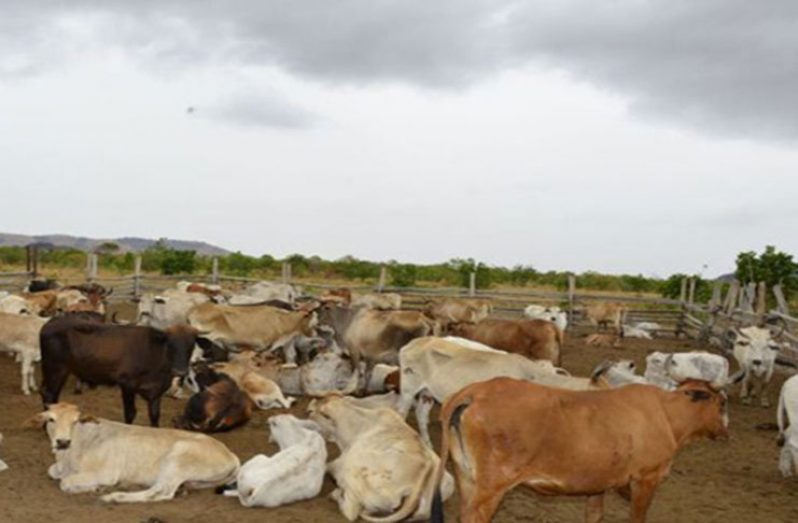GOVERNMENT has embarked on a targeted livestock development programme, which will see Guyana not only rebuilding its herd with a view to exporting beef, but also establishing two modern abattoirs.
Finance Minister Winston Jordan said the abattoirs will be built in Regions Five and Nine and when completed, will enable farmers to slaughter and process their livestock according to international standards.
The inclement weather in 2017 resulted in significant loss of livestock and dampened agricultural production overall.
In recent years, Guyana has experienced extreme rainfall patterns, which resulted in the flooding of critical agricultural regions of the country.
“The negative impacts of this on the sector and the livelihoods of many have been painful. As a climate change adaptation and mitigation intervention in 2018, Government will procure the services of a contractor to design and supply nine fixed and five mobile pumps to augment the existing inventory of 60 fixed and mobile pumps,” Jordan said.
These pumps will provide services to targeted areas along the coast that are susceptible to excessive flooding and have limited natural drainage capacities.
Over 50,000 acres of rice cultivation, cash crops and cattle are expected to benefit from the installation of the fixed pumps.
Additionally, the five mobile pumps will serve areas that have a larger residential population, such as La Penitence South, Cummings Canal, Church Street, Sussex Street and South Ruimveldt.
“Government will continue to dedicate significant resources to the development, rehabilitation and maintenance of our drainage and irrigation systems, with over $6.1 billion being allocated in 2018. In addition, over 75 km of canals and drains and over 20km of dams will be constructed, rehabilitated and/or maintained, clearing approximately 150 acres of land for cultivation and benefitting over 100 farming households,” he said.
He also noted that work will commence in 2018, on the development of aquaculture and inland fisheries regulations and Government will finalise the marine fisheries regulations.
“It is also expected that increased monitoring and surveillance will be executed with the aim of increasing licensed vessels in the artisanal fleet. Further, the Fisheries Department will benefit from $54 million to purchase a vessel of their own to ensure more effective sea monitoring.
Tuna fishing is also being developed and there is expression of interest from other private investors in other areas of fishing such as mariculture,” the minister said.
The Fisheries Department will continue to work closely with all stakeholders to facilitate the development of a diverse and thriving industry.
Jordan said given the changing agro-economic landscape and the collapse of the sugar industry, Government has to be thoughtful, vigilant and strategic in outlook.
Investment in the agriculture sector, he said, must have sustainable cost structures, address the needs of the people, be data-driven and supported by evidence-based planning.
“We must first take stock of the current configuration of farmers, farming systems and cost structures across the country, through a national agricultural census. Such an exercise was last undertaken over half a century ago. The census will be critical in the development of land-use plans for the agriculture sector and facilitate a more efficient allocation of resources by both Government and the private sector,” the minister said.
In 2018, a sum of $200 million has been allocated towards this activity. The census will also complement Government’s interventions, especially as it escalates attention and investment in the Intermediate and Rupununi Savannahs.




.jpg)










